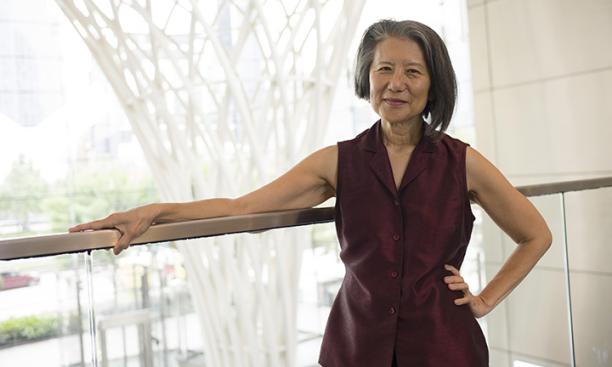
Elizabeth Krist ’79 was a photo editor with National Geographic for more than 20 years. Krist is a founding member of the Visual Thinking Collective and is currently a panel judge for The New York Times Illustration Portfolio Review, which pairs illustrators with New York Times art directors who give them feedback and guidance. PAW spoke with Krist about her career in the visual arts.
How did you start your career at National Geographic as a photo editor?
Soon after graduation, a job came along at the Asian magazine Asia Society as a photo editor. That was my first job working with visuals and visual design. After that I went to Fortune magazine and met lots of lifelong friends and photographers before ending up at National Geographic. I was at National Geographic for over 20 years and absolutely loved that. I was so incredibly fortunate to work with so many of the most stellar photographers in the world. It was really the privilege of a lifetime.
What was fantastic about National Geographic was the photo editors were not just there to edit, but they were there for every story from beginning to end. We were working on stories, working with photographers, working with photo directors, and conducting tons of research. Overall, it was such a collaborative experience, and we would spend so much time together, making lifelong friends. As an editor we would work on the very beginning of finding photographers to the publication, so everything from A to Z.
How has Princeton shaped the trajectory of your professional life?
The most important aspect of Princeton for me was my friends. The second aspect is probably planting some of the seeds that are still so crucial in my career that have had to do with storytelling and narrative. A class I took, History of Film, and Professor John McPhee helped me understand the elements of narrative and storytelling. I also think that [during] the years I was there Princeton women made about a third of the student body. As someone who is a person of color and a woman and a minority in so many different aspects, it taught me that I needed to have a certain amount of strength and a certain amount of resolve to be able to do what I wanted to do.
What are you excited to focus on next?
Most of my work now is board work. I am on the board of Women Photographs [a nonprofit photo database aimed at elevating the voices of women and nonbinary photographers]. I also work closely with the W. Eugene Smith Memorial Fund, which is a grant making organization that can present brands with photographers. I also work with the Eddie Adams Workshop that brings photographers and editors into the professional community.
A lot of my time is spent judging competitions and grants as well. I love curating and whenever I get that chance that is quite wonderful. I’ve done three photo installations while often collaborating with my colleagues, and often those are my favorite things to do.
For National Geographic, I curated and worked very closely on a book on women photographers called Women of Vision. I’ve also been working with independent photographers and working with others on book edits that are hopeful for publication.
— Interview conducted and condensed by Sophie Steidle ’25
